Federation fail: Separate laws keep deadly sniper rifles on our streets
High-powered .50 cal guns banned for being too dangerous by some states are legal over the border, as states and territories fail to harmonise gun laws or agree to a national gun registry.
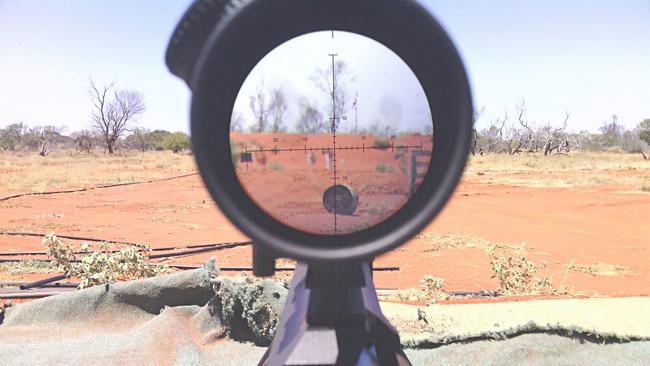
High-powered weapons such as .50 calibre sniper rifles are legal in Australia despite some states banning them on the basis they are too dangerous and arguing there is no legitimate need for them.
The inconsistency between the states is revealed as the push to establish a national firearms register stalls due to a funding dispute between the smaller jurisdictions and Canberra, and the refusal by all states and territories to harmonise their gun laws.
Western Australia recently banned .50 calibre rifles after requests from state police concerned about the safety of officers.
But the lack of a uniform national position on the high-powered guns underscores the failure of almost 30 years of negotiations between the states and territories to agree on firearm laws and classifications.
Target on Guns
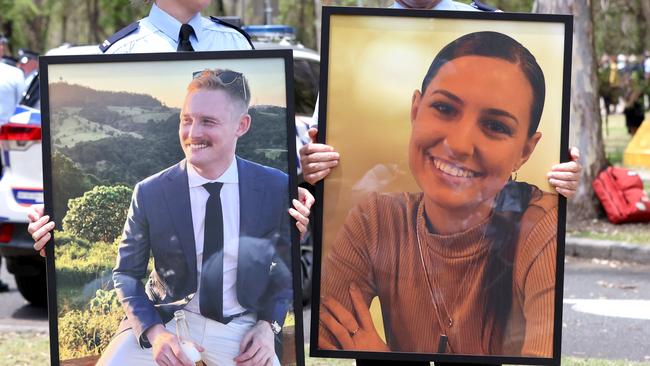
Extremists, crims, AVOs on guns register
A $250m national firearms register will have access to criminal records and family violence orders alongside details of guns and firearm licence holders.

Firearms register win, as FBI nabs cop killers’ US contact
Twenty-seven years after it was first agreed following the Port Arthur massacre, Australia’s leaders sign a historic deal to introduce a national gun registry.
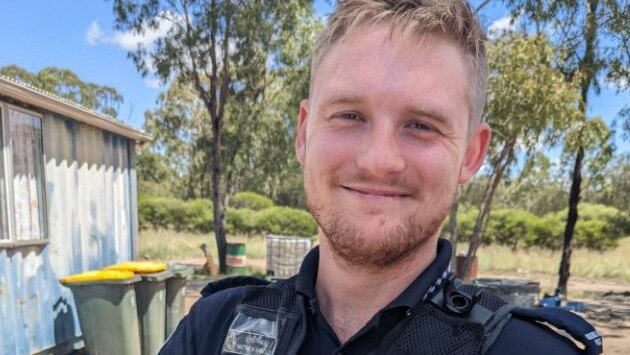
Nation’s leaders urged to do deal on gun register
Police and gun safety advocates urge premiers, PM to ‘show some fortitude’ on firearms ahead of the anniversary of the Wieambilla police murders.

‘Red-flag cop-haters, sovereign citizens’ on firearm register
A national firearm register should include intelligence about licensed gun-owners who have been identified on social media as ‘police-haters’ or sovereign citizens.

Fight over cash derails register
The national guns register has hit an 11th-hour roadblock with a blow-up between state and federal treasurers derailing plans to finalise a funding deal.

Delays give high-risk suspects 41-day start
No money, competing priorities: Victoria Police delays give high-risk suspects 41 days grace period before firearm prohibition orders are served.
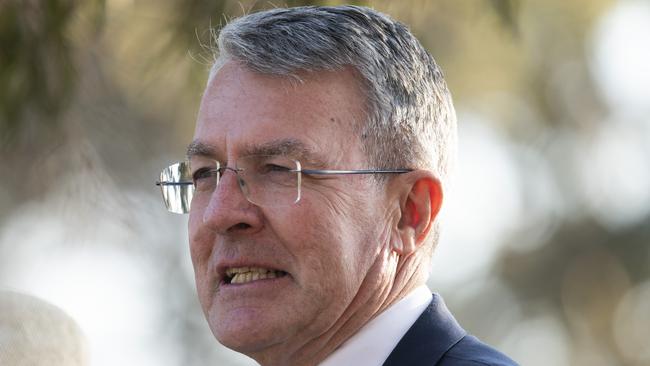
Firearms register ‘now within range’
Gun safety advocates say Australia’s state, territory, and federal governments have ‘never been closer’ to a deal on a national firearm register, 27 years after the Port Arthur massacre that first prompted calls for the database.
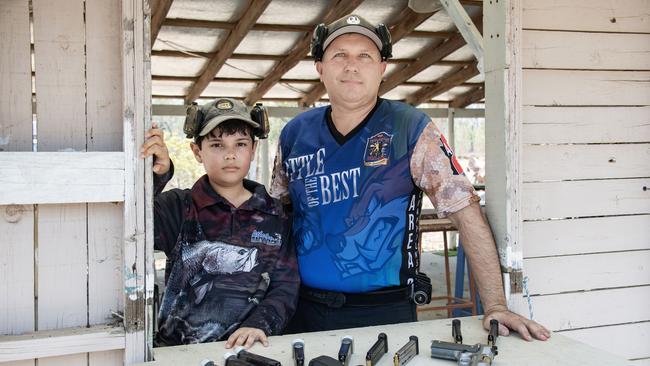
Young shooters aim for sporting success
Sport for some kids involves a ball or a racquet, but 12-year-old Quinn Coates-Marnane much prefers a pistol. The Cairns schoolboy is one of a growing number of children learning how to shoot competitively.
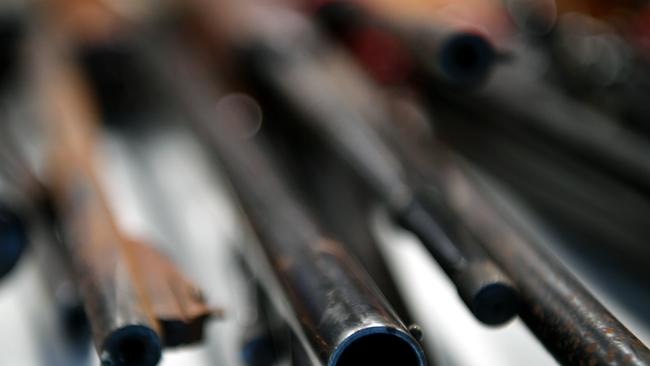
‘Ridiculous’: Police slam failure to act on guns register
An Australian-owned and operated company built New Zealand’s new national firearms database, prompting police advocates to ask why the same can’t be used domestically.

Victoria cries poor on guns, asks Canberra for help
Victoria has joined smaller jurisdictions asking Canberra for financial assistance to upgrade old state firearms registers to make them compatible with a real-time digital national gun database.
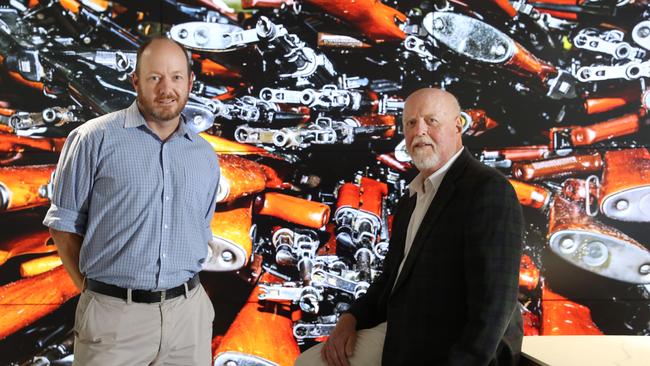
Aussie-made arms register controls guns abroad – why not here?
A low-cost simple-to-use system known as ArmsTracker is operational or being installed in countries across the globe. But its creators say it wouldn’t suit Australia because ‘they wouldn’t trust anything less than $2m’.

$30m slug to sign up to firearms registry
Smaller states and territories could be slugged with a bill of $30m each to join a national firearms register and are increasing pressure on the federal government to pay for the new digital guns database.
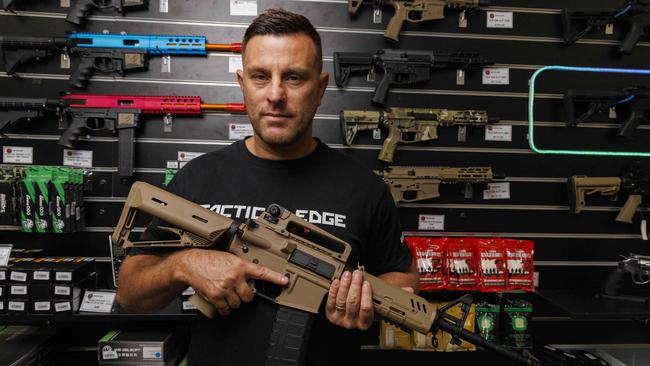
Pressure on state to ban replica ‘gel blasters’
Gun control advocates urge Queensland to follow the rest of Australia and ban gel blasters instead of labelling them toys.
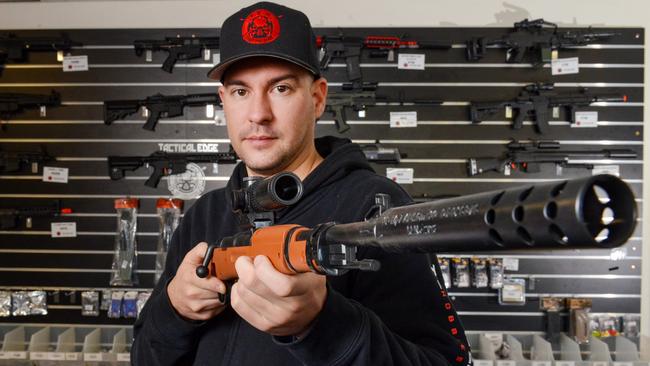
20 years’ jail for firing this ‘toy’? It’s ludicrous, blasts judge
In every other jurisdiction except Queensland you need a gun licence to wield this recreational weapon. Has the rest of the country got it wrong?
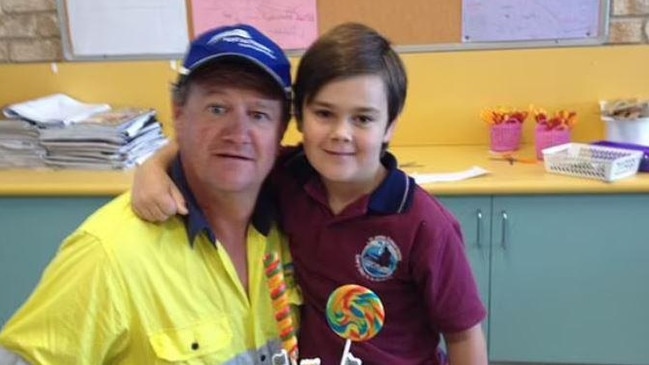
States resist health check for licences
Every state and territory except WA is resisting calls from coroners and advocates to introduce mandatory mental health checks before gun licences are granted.

Grieving mother’s lament: Why did police let my son have a gun?
Just days after his 20th birthday, Robbie Lawrence unlocked his double-barrel 12-gauge shotgun from his father’s gun safe, drove to a remote bush track in regional Victoria, and killed himself.
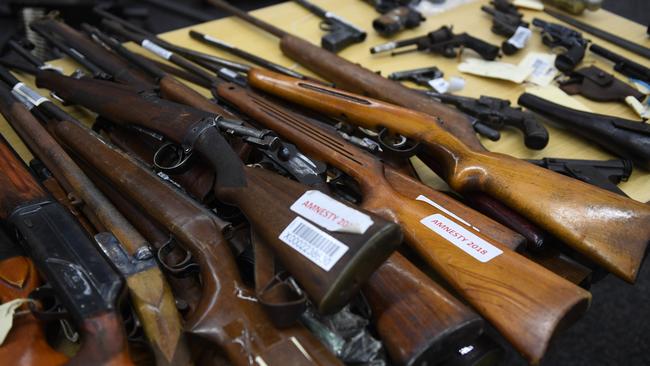
Legal guns near four million in Australia
The number of registered guns in Australia approaches four million for the first time, but ownership rates remain low, with a 48 per cent decline since the National Firearm Agreement in 1996.

The forgotten victims of legal guns
Children, grandchildren and partners are the main victims of homicides carried out by licensed shooters, as lawful gun owners turn their registered weapons on those to whom they are closest.
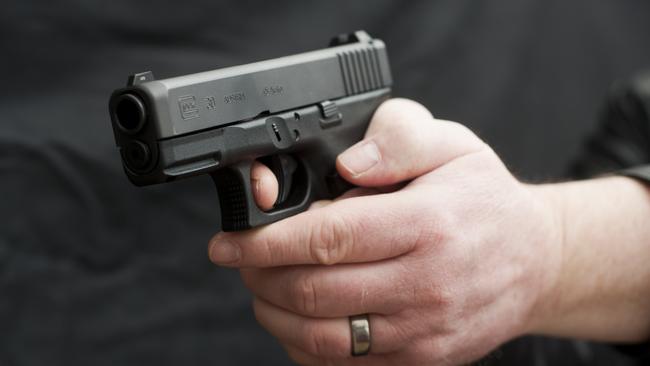
Coroners warn on shooting range suicides
Most of the nation’s shooting ranges are not required to install bulletproof barriers or lifesaving tethers for guns used by unlicensed shooters, despite coroner warnings after the suicides of at least 11 people.
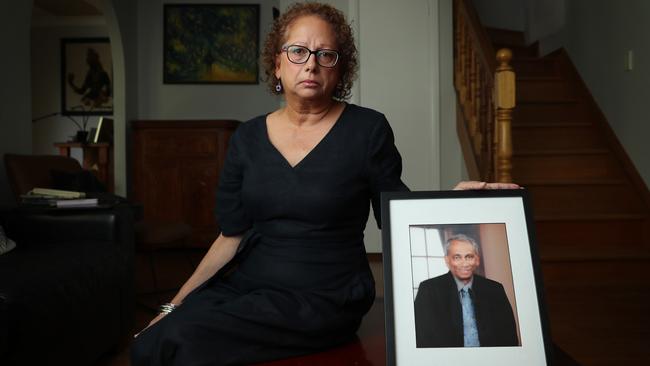
Shockwaves after daughter lures her dad to a violent death
It’s been 13 years since Di Bonarius’s sister shot their beloved father dead after stealing a gun from a pistol club, but the traumatic aftershocks of the violence are still shaking her family.

Inquest costs met for cops’ families
The families of the two murdered officers will have union-funded lawyers to represent them at the inquest, as one family expresses concern about some actions of Queensland police.

Christian extremist terror hit not enough to deliver gun register
Nearly a year after constables Matthew Arnold and Rachel McCrow and good Samaritan Alan Dare were gunned down at Wieambilla, bureaucratic inertia and a fight over funding has stalled the process.

Young cop’s execution caught on body cam
Sniper’s lairs, battery-powered security cameras, and the cold-blooded execution of a young constable captured by her own body-worn camera: what really happened during the bloody Wieambilla ambush.
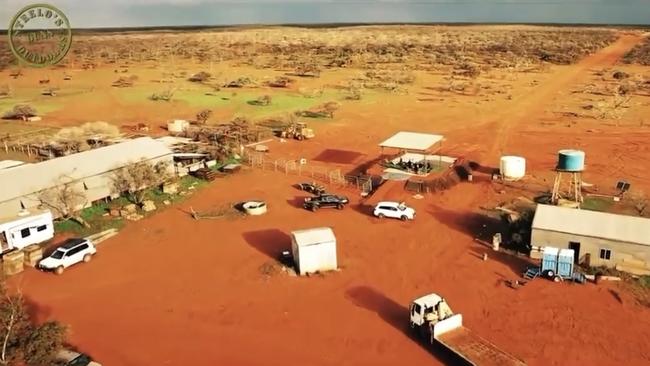
New laws were a killshot for Ella Valla station. Then Andrew Forrest swooped
For years, tourists would come to Shane Aylmore’s remote cattle property in WA, paying huge sums to fire enormous long-range weapons into the outback. In just one night, it was game over.

Gun, data reforms ‘would save cops’ lives’
‘Real time’ information would enable police to do a proper risk assessment before entering a property.
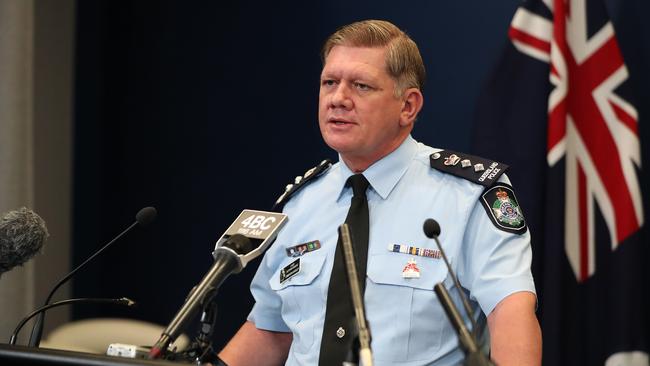
Outdated registry ‘is a threat to police’
Queensland’s firearms registry is still not fit-for-purpose and is putting police officers and the general public at risk, nearly three years after a warning from the auditor-general.

Up to 130,000 WA guns off the street
WA will become the first Australian jurisdiction to limit how many firearms a shooter can legally own, as the Labor government wants to slash the number of legal guns by about one-third.
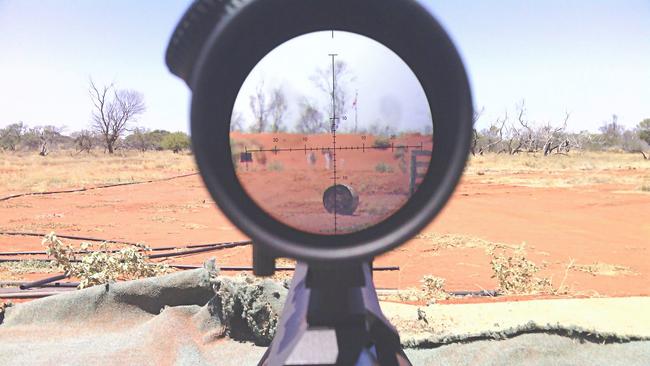
Federation fail: Patchwork of laws keep sniper rifles on our streets
High-powered .50 cal guns banned for being too dangerous by some states are legal over the border, as states and territories fail to harmonise gun laws or agree to a national gun registry.
The sniper or assault-style BMG rifles can shoot accurately for hundreds of metres and were originally designed to target tanks and aircraft in World War I.
The Australian’s Target on Guns investigation this week revealed an effective national firearms register still did not exist, nearly one year after two police officers and a good Samaritan were murdered by domestic terrorists at Wieambilla in southern Queensland last December.
A real-time national weapons database has been costed at about $200m, and would take four years to be operational from the time it was agreed.
The Wieambilla shootings highlighted the poor communication and confusion that exists between the states when it comes to classification, storage and licensing of firearms.
Both the federal Liberals and Nationals urged the Albanese government to settle the funding dispute and deliver the national firearm register urgently.
Nationals leader David Littleproud said a national register that shared gun ownership information between state police forces would protect officers.
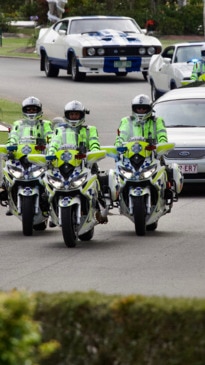
“It’s a simple proposition that should not have to take this long to establish and protect our law enforcement officers,” Mr Littleproud said.
Shadow attorney-general Michaelia Cash said there had been no movement on the register for six months.
“The last we heard was from Attorney (-General Mark) Dreyfus back in June, when he sent it to the national cabinet. But once it landed in the Prime Minister’s court it seems like nothing has been done,” Senator Cash said.
“The tragedy at Wieambilla shows just how important it is for policing around the country, and I call on the Prime Minister and Attorney Dreyfus to come to an agreement in the interests of all Australians.
“We’re not privy to those funding conversations between the States and the Government and don’t know what the sticking points are.”
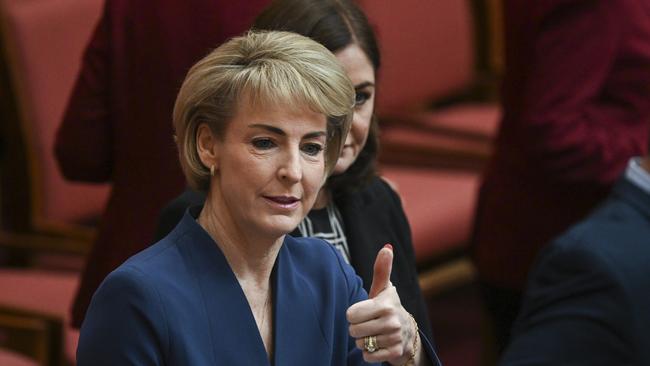
Prime Minister Anthony Albanese again declined to comment, as did Treasurer Jim Chalmers, while a spokesman for Mr Dreyfus said the federal government was still working with the states and territories on the national firearms register proposal.
“We remain committed to preserving the safety of the community and of police,” Mr Dreyfus’s spokesman said.
NSW Premier Chris Minns said he did not know what the holdup was, but said NSW’s registry was ready to be compliant with a national register.
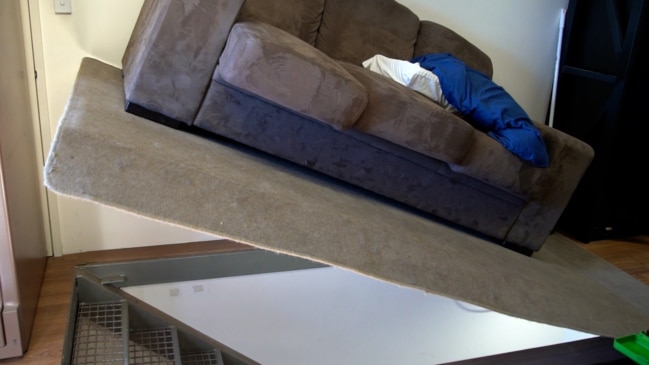
“My understanding (is) that our databases are fully compliant for an eventual national register and we are ready to comply with whatever national agreement comes about,” he said.
“I think it’s important that we do make progress. We don’t want to see a situation where someone crosses borders and, as a result, skips their obligations or the police’s knowledge about who has access to those firearms.”
West Australian Police Minister Paul Papalia, who has said his state will pay for an upgrade to its weapons registry to be compatible with the national register, banned 56 types of high-powered guns including .50 calibre rifles from July.
Mr Papalia said he could not understand why the weapons were prohibited in WA but allowed in other states, but said it was a matter for those jurisdictions whether they followed his lead.
“That’s their problem, their challenge, but I think they should explain why they think it’s reasonable that firearms of that capacity are legal and enabled in their jurisdictions, but it’s not my problem,” he said.

More than 180 firearms were bought back from WA owners by the government and some were legally sold interstate. Mr Papalia said he was “unashamed” at the decision.
“It’s had no impact at all on vermin control, and in the event that it had any impact on people who wanted to pursue target shooting, well that was considered to be less of a priority than community safety, and particularly police safety,” he said.
“I’m unashamed in saying … police safety is a higher priority than someone’s desire to shoot a military-grade sniper rifle for the comfort or the enjoyment of doing that.”
The WA government bought a .50 calibre weapon to fire at its media announcement in March 2022 flagging the impending law, resulting in the Australian Defence Force being forced to restrict air space at the nearby RAAF Base Pearce due to the potential range of the weapon.
A requested Notice to Airmen warned of dangers to a height of 18,000 feet, and said: “These projectiles have a significant velocity and could cause very serious damage to an aircraft if inadvertently struck by one.”
But Shooters Union president Graham Park said the weapons had never been used in a crime, and were used by long-distance sporting shooters for targets that were between 1000m and 4000m away.
Mr Park said the firearms cost between $8000 and $20,000 each, and each shot costs between $10 and $50.
“They’re not going to hold up a bank. They weigh upwards of 20 kilos and on average are 1.8 to 2m long,” he said.
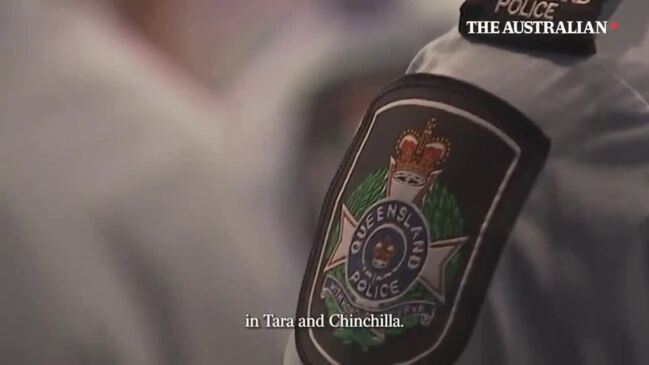
But Gun Control Australia president Tim Quinn said the weapons should be banned nationally, or re-categorised.
“Technology has come a long way since we developed the categorisation system, and it’s no longer fit to catch the reload actions and power we see in these guns,’’ Mr Quinn said.
“There’s very limited situations where you could put a high-powered, high-calibre and fast-reloading firearm above public sentiment and public safety.
“Australians vastly don’t want more guns, and particularly those which increase safety concerns.
“A lot of domestically built and imported firearms are being banned in some Australian states under appearance laws, which are regularly challenged. We need to overhaul the categorisation system so we’re not relying on appearance law.’’

Australian Federal Police Association president Alex Caruana also called for a nationwide ban on .50 calibre BMGs for civilian shooters, because of the damage they could do from such long distances.
“It should be quarantined for use in the military only,” he said.
“There is no reason I can see why a civilian shooter would need a .50 calibre, particularly a .50 BMG, to take down any game in Australia – apart from they can, or because they’re a collector.”
While permits are hard to get for such large-calibre firearms, some hunters do manage to obtain them on remote stations to shoot vermin such as buffalo. The Eagle Park shooting range in Victoria allows .50 calibre guns to be shot on a 500m range. South Australia allows them, on rare occasions, to be used for recreational hunting. NSW Police did not directly answer questions about the availability of guns of calibres such as .50 BMG but shooters said it was possible to get permits for them in NSW.
The Australian has been told some states issue permits to gun-licence holders to acquire a .50 calibre weapon to shoot vermin in the Northern Territory – despite the guns being banned there.
Queensland allows .50 calibre weapons in some circumstances and currently has 1762 registered .50 calibre guns.
Other .50 calibre weapons used in sport or target shooting also had limitation imposed on their muzzle velocity by the shooting ranges where they were used.
Calibres such as .50BMG weapons were deemed restricted, and could be possessed by armourers and dealers, collectors and theatrical suppliers if they had been rendered permanently inoperable.
South Australia Police said it had 503 registered .50 cal firearms, of which only one was deemed a “high-performance .50 calibre firearm”.
“High performance .50 calibre or greater firearms, such as the BMG, are only permitted in circumstances of exceptional justification for use in the likes of target shooting, hunting, primary production, or contract shooting,’’ a spokesman said.
ACT Police said: “The ACT does not register .50 BMG or its derivatives, nor have we ever. They are banned in the ACT.’’
Victoria Police declined to provide numbers of .50 cal gun registrations but said the number was low.
“Firearms with a calibre of .50 and greater are only available to licence holders for the purpose of target shooting in defined long-distance competitions,’’ a police spokesman said.
“Membership of a club that participates in those competitions is a prerequisite of ownership.’’
Tasmania outlaws .50 calibre guns except for those which have been rendered inoperable and are held by museums and collectors. Tasmania Police said there were 75 inoperable .50 calibre firearms registered in the state, with collectors, firearm dealers, and held within the police ballistics library.


To join the conversation, please log in. Don't have an account? Register
Join the conversation, you are commenting as Logout